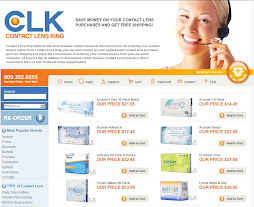Nearly everyone has heard of LASIK (Laser-Assisted in situ Keratomileusis), the eye surgery that alters the cornea* for better vision. As innovative and beneficial as LASIK has become in recent years, the assumption that the procedure eliminates all need for eyeglasses and contact lenses is not entirely correct.
Refractive surgery is successful in many cases, but there are those who come away from LASIK with less than the desired sharpness of vision. Several factors affect an individual’s satisfaction with laser eye surgery: cornea health and characteristics; the extent of the refractive error and strength of prescription needed; tear production; a patient’s age and expectations. Cornea shapes are not uniform for everyone and these variances affect laser-response and healing. Heightened sensitivity to light--with glare, halos, or ‘starbursts’--can occur. Other symptoms include blurred vision (oftentimes known as irregular astigmatism) and diminished ability to see for night driving.
A follow-up laser procedure, called enhancement, is available for further correction. But this can be prohibited if the cornea is too thin or other complications arise from the initial surgery. Patients at this stage often find that contacts are the next best option for achieving that crisp vision they want. However, acquiring lenses cannot happen right away; fittings must wait until complete healing of the cornea. This occurs generally at 6 months post-op (individual healing times vary), a point when adhesive proteins in the eye have sealed the epithelial flap over corneal tissue exposed during the operation. The seal becomes stronger from this time forward, resulting in a natural suture.
Gas permeable (GP) lenses are the leading choice for post-LASIK correction because of their rigid structure. This rigidity is needed to allow a pool of moisture to form between the actual cornea and the backside of the contact lens. The cornea’s irregularities are then masked as the front surface of the lens permits the correctly refracted light to enter the eye. Soft contacts are not firm enough to accomplish this.
A newer development in contact technology is the hybrid lens. These combine facets of both GP and soft contacts by permitting the visual zone of the lens to remain rigid and gas permeable, with the remaining rim made of soft material. This results in a more comfortable contact that corrects aberrations occurring after LASIK.
Since the cornea has been significantly altered during laser surgery, the fitting process for contacts can take longer than normal. Some amount of patience must be spent during the trial period while finding the right lens. Consulting an eye physician who specializes in this field is always an option and it may make the transition less stressful.
Your eye doctor can answer all your questions about contacts for post-LASIK wear.
*The cornea is the clear ‘window’ of the eye that allows light to enter permitting sight. Irregularities in the shape of the cornea cause refractive errors such as myopia (nearsightedness), hyperopia (farsightedness) and astigmatism (distorted or blurred vision at all distances).
Subscribe to:
Post Comments (Atom)





No comments:
Post a Comment